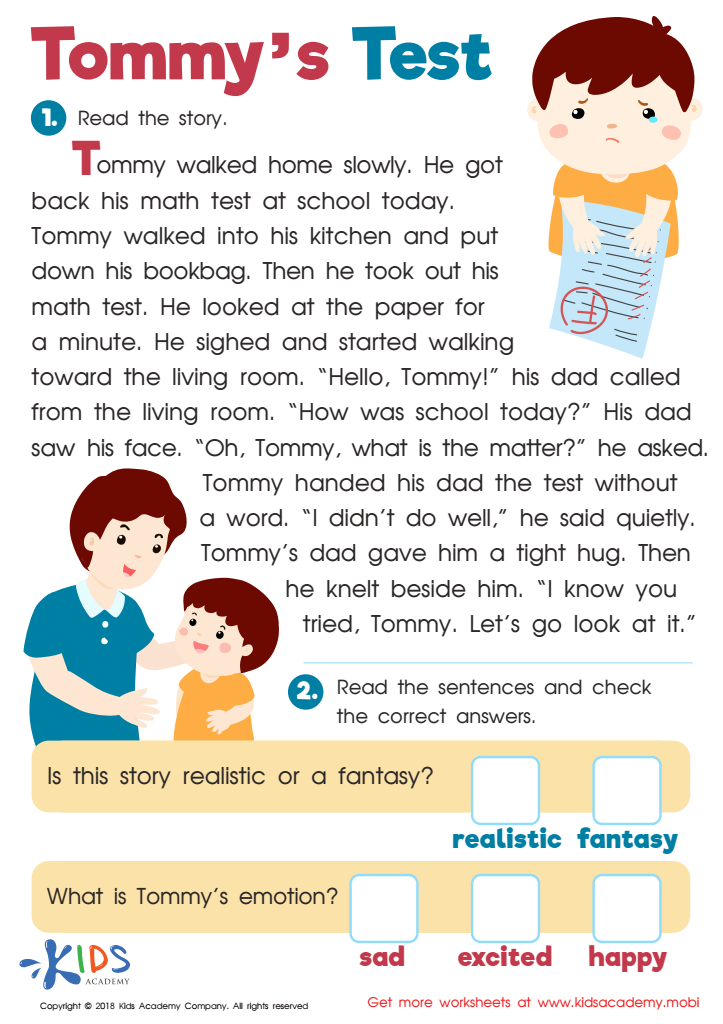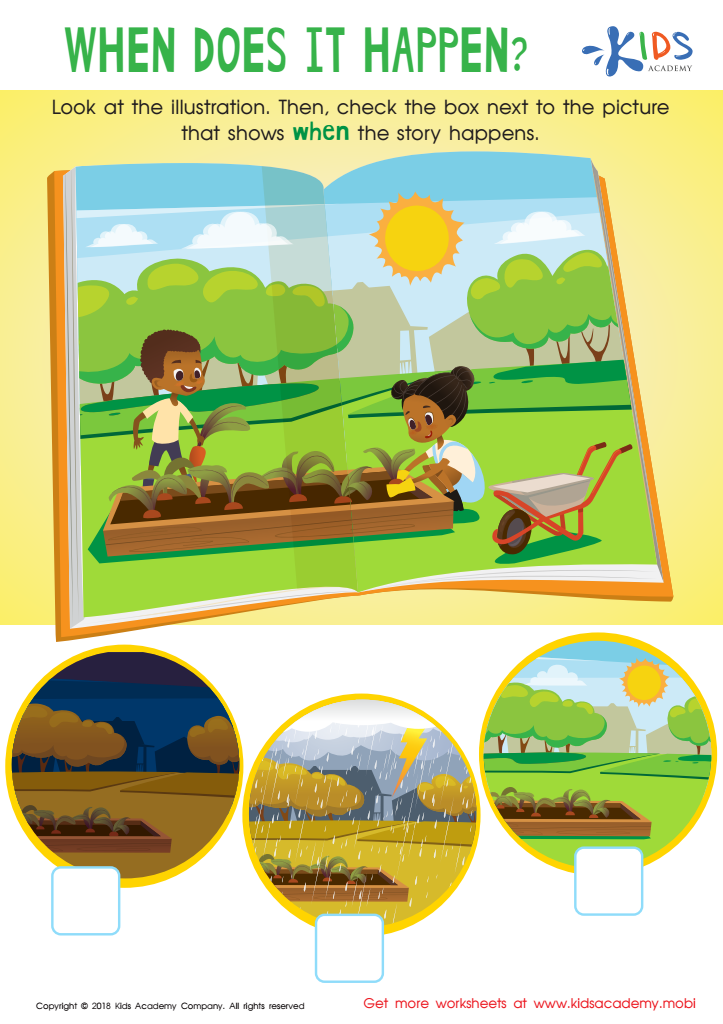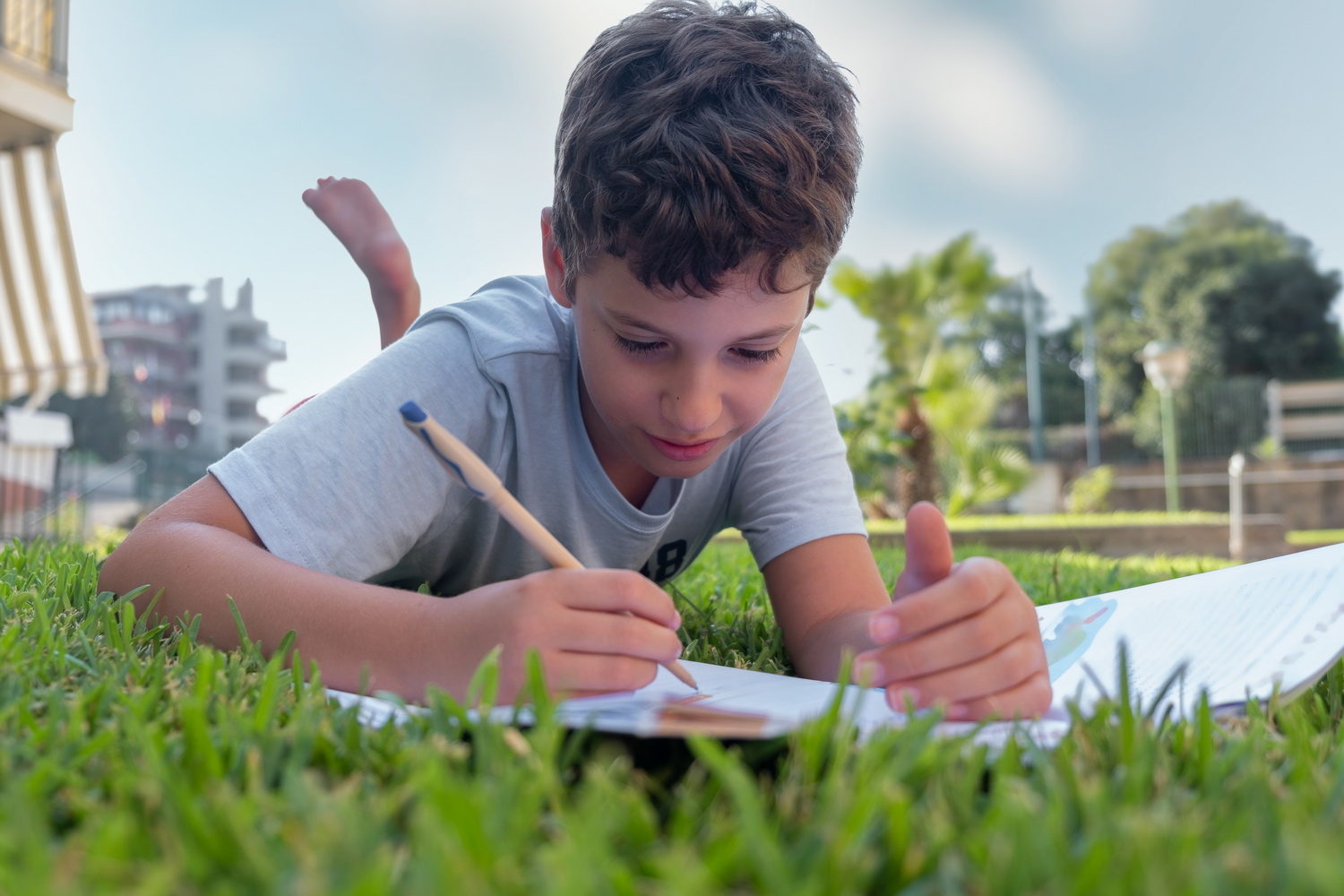Understanding Sequences Reading Fiction Worksheets for Ages 3-9
3 filtered results
-
From - To
Unlock your child's potential with our "Understanding Sequences Reading Fiction Worksheets" designed for ages 3-9. These engaging worksheets help young readers grasp the important skill of sequential understanding in stories. By illustrating story progression, kids learn to identify key events, enhance comprehension, and improve recall. Our materials feature colorful visuals and kid-friendly language, making learning enjoyable and accessible. Ideal for both home and classroom use, these worksheets promote critical thinking and literacy skills in a fun way. Dive into our resource library today and support your child's reading journey with sequences that inspire imagination and creativity!


Tommys Test Worksheet


Sequencential Order Worksheet


When Does It Happen? Worksheet
Understanding sequences in reading fiction is crucial for young children aged 3-9, as it fosters critical cognitive and linguistic skills. For parents and teachers, recognizing the significance of sequences helps nurture children's comprehension abilities and storytelling skills.
Firstly, sequences teach children to arrange events logically, which is vital for processing information. This skill not only enhances their reading comprehension but also aids in following instructions in daily life. As they begin to identify beginnings, middles, and ends in stories, they learn to predict outcomes, which cultivates analytical thinking.
Furthermore, discussing sequences encourages rich dialogue between parents and children, enhancing vocabulary as well as social skills through storytelling interactions. This collaborative learning environment makes reading a fun and bonding activity, promoting a lifelong love for books.
Additionally, mastering sequences contributes to the development of writing skills. As children learn to structure their thoughts coherently, they improve their ability to express themselves in writing.
Ultimately, by prioritizing the understanding of sequences in fiction, parents and teachers equip children with the fundamental skills necessary for future academic success and life experiences, laying the groundwork for well-rounded, articulate individuals.
 Assign to My Students
Assign to My Students





















